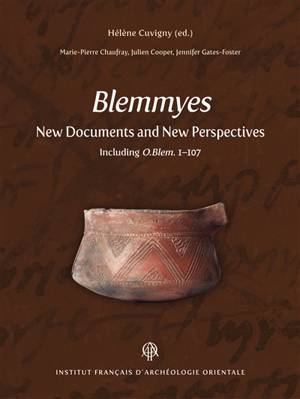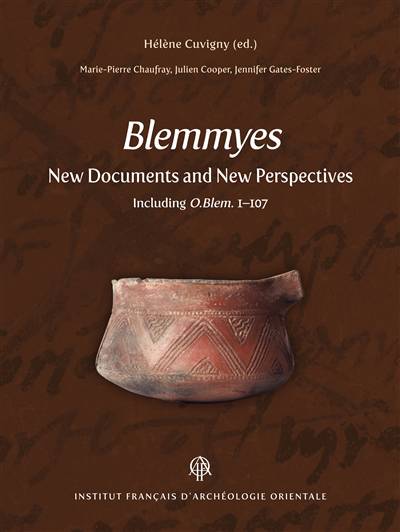
- Afhalen na 1 uur in een winkel met voorraad
- Gratis thuislevering in België vanaf € 30
- Ruim aanbod met 7 miljoen producten
- Afhalen na 1 uur in een winkel met voorraad
- Gratis thuislevering in België vanaf € 30
- Ruim aanbod met 7 miljoen producten
Zoeken
Blemmyes
New Documents and New Perspectives
Marie-Pierre Chaufray, Julien Charles Cooper, Jennifer E. Gates-Foster
Hardcover | Engels
€ 84,95
+ 169 punten
Omschrijving
In the Ptolemaic station of Bi'r Samut (3rd cent. B.C.) on the desert-road between Edfu and Berenice, the same African nomads were called Trogodytai in Greek and Blhm.w in Egyptian. In this word we recognise the Blemmyes of Greek and Latin literature and of documents from late antiquity. And yet, three centuries later, these nomads were simply called Barbaroi in the Roman garrisons of the Eastern Desert. From this discovery came the idea to publish, in the same volume, the demotic ostraca from Bi'r Samut that mention Blemmyes, together with a group of Greek orders to distribute grain to Barbarians from the time of Gallienus, found at the Roman praesidium of Xeron Pelagos. The only archaeological remains that can be attributed with certainty to these nomads are vessels and shards of Eastern Desert Ware, a hand built, polished ceramic decorated with incisions. The examples found at Bi'r Samut are published in the volume. The three chapters consecrated to the unpublished documents are preceded by a presentation of the history of the nomad-population of the Eastern Desert of Egypt in the long perspective from the Pharaonic period onwards, and reflexions on the names given by the Greeks and the Romans in turn to these people who occupied the Eastern Desert of Egypt and Nubia.
Specificaties
Betrokkenen
- Auteur(s):
- Uitgeverij:
Inhoud
- Aantal bladzijden:
- 224
- Taal:
- Engels
Eigenschappen
- Productcode (EAN):
- 9782724708530
- Verschijningsdatum:
- 20/06/2022
- Uitvoering:
- Hardcover
- Formaat:
- Genaaid
- Afmetingen:
- 246 mm x 326 mm
- Gewicht:
- 1138 g

Alleen bij Standaard Boekhandel
+ 169 punten op je klantenkaart van Standaard Boekhandel
Beoordelingen
We publiceren alleen reviews die voldoen aan de voorwaarden voor reviews. Bekijk onze voorwaarden voor reviews.











